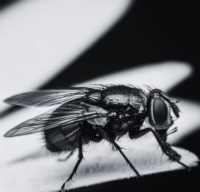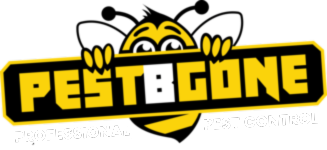Pestbgone Limited
The Mews, Hounds Road,
Chipping Sodbury, Bristol GL8 8UL
Buckinghamshire -
Office: 01628 473062
Onsite: 07728 314363
South Gloucestershire -
Office: 07585 124939
Onsite: 07585 124939
Our Services
Registered in England and Wales.
Company No: 13370531
VAT No: 364671477
Registered Address: The Mews, Hounds Road, Chipping Sodbury, Bristol, South Gloucestershire GL8 8UL
All Rights Reserved © 2025 Pestbgone Ltd






Our Services
Cluster Flies
Cluster flies are found throughout the UK, but predominantly in rural areas. Their common name refers to their habit of forming clusters when hibernating, often in large numbers in the upper rooms and roof spaces of buildings during the autumn period.
Whilst there is a specific species of common cluster fly (Polleniarudis), there are four other species which vary in size and colouration, so it is possible to have mixed populations of flies causing the problem inside suitable buildings. Any of these species of fly presence is not a sign of poor hygiene. There is no need, and in it is not practicable to try to control the flies outdoors or to control their breeding areas.
Life Cycle
During the summer months these flies live and breed in fields and are not a problem. They are parasitic on earthworms and their larvae live in the soil, emerging as adults at the end of summer. In the autumn under natural conditions they would hibernate in dry sheltered areas such as under loose bark or in hollow trees. The survivors of the winter would then emerge the following spring to return to the grassy fields to continue their life cycle. However, with houses close to open spaces and fields it is quite common in the autumn for these flies to congregate in large numbers on the outside of buildings, especially on sunny, south-
The following days they may emerge and sun themselves but as autumn moves on and temperatures drop they finally remain inside until the process is reversed the following spring. The big problem is that they tend to invade in large numbers. Fitting fly-
What Can Be Done?
There is very little that you can do to stop the flies getting in. Making sure that gaps around window frames are re-
For small infestations, if you do not want to use insecticides, a vacuum cleaner will give limited effect effective in sucking up flies. Like a fly spray, this will only deal with the flies you see -
Cluster Fly Treatments
1/ Our Service is to attend your premises, inspect the relevant area and treat the active cluster fly habitat with insecticide with the intention of controlling the problem. This may not eradicate the cluster flies.
2/ Non-
WikiPest
Everything you need to know about
Cluster Flies

We’re here to help -
Buckinghamshire & South East
South Gloucestershire & South West
